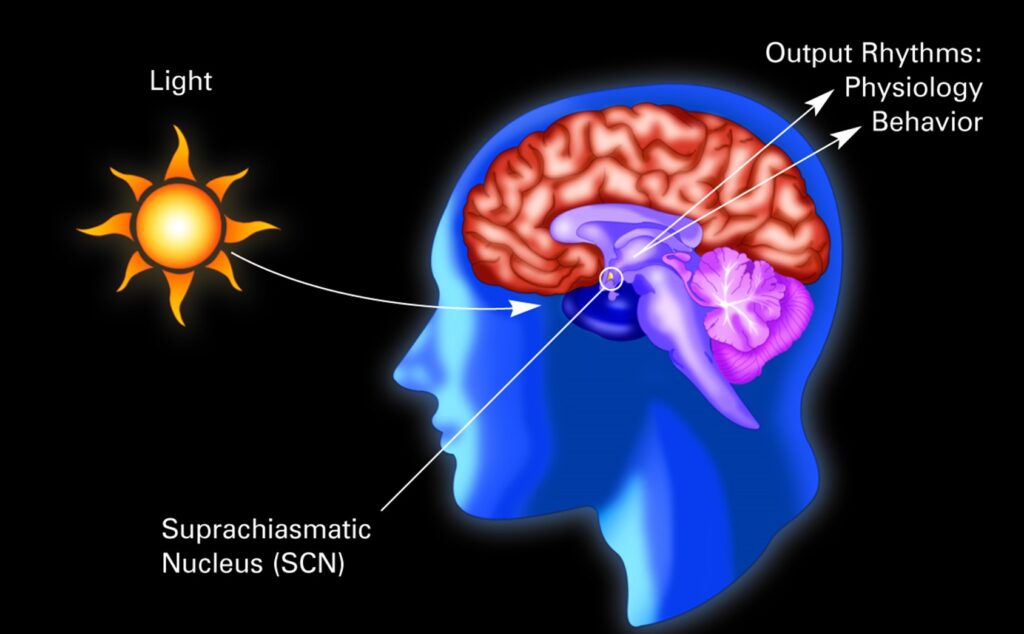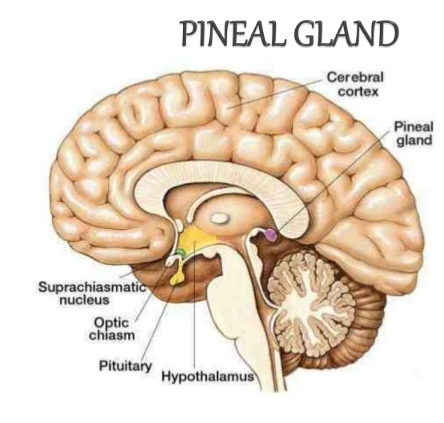Light and dark significantly impact the functioning of biological systems, including humans. The biological systems on earth evolved over millions of years in concert with the day/night cycle. The recent invention of artificial light interrupts the proper functioning of the biological systems. This existence of artificial light is having a negative impact on human health.
Circadian Rhythms
Biological clocks consist of molecular proteins that interact with cells throughout the entire human body.[f] These biological clocks produce circadian rhythms based on the day/night cycle. The human brain has a master clock that coordinates all of the other biological clocks in the body. Light and the absence of light drives this entire system. Artificial light interrupts this delicate process.

Figure 1 – Circadian Rhythms[f]
The glymphatic system removes waste proteins from the brain. Research has shown that the brain’s master biological clock controls the glymphatic system.[f] The waste removal process only occurs during the natural sleep time for humans, which is when it is dark, and not just during the time of sleep. Interruption of the sleep-wake cycle by artificial light degrades the functioning of the glymphatic system.
The pineal gland deep in the center of the brain produces the hormone melatonin in response to darkness. As day turns to night, the pineal gland secretes more melatonin. The pineal gland has been called the “hormone of darkness” because it informs cells in the body that darkness is coming and to begin the process of sleep. Sleep is the time when the body’s cells are repaired, and waste removed.

Figure 2 – Pineal Gland[f]
Artificial light reduces the amount of melatonin released by the pineal gland which then leads to sleep disorders. Sleep disorders increase the risk of cancer, diabetes, obesity and mental health issues.[f]
Mental Health
The human eye has three types of photoreceptor cells: rods for sensing brightness and contrasts in low-light situations, cones for sensing colors in well-lit situations, and ganglion cells that support our circadian rhythms.[f] When exposure to light is mistimed or nearly constant, biological and behavioral rhythms can become desynchronized, leading to negative consequences for health.[f]
A study released in 2020 showed that teenagers developed higher levels of mood and anxiety disorders, including bipolar disorder when exposed to higher levels of artificial light.[f]
Sensory processing sensitivity (SPS) is a temperamental or personality trait involving an increased sensitivity of the central nervous system and a deeper cognitive processing of physical, social and emotional stimuli. The trait is characterized by a tendency to ‘pause to check’ in novel situations, greater sensitivity to subtle stimuli, and the engagement of deeper cognitive processing strategies for employing coping actions, all of which is driven by heightened emotional reactivity, both positive and negative.[f]
People with SPS are more likely than neurotypicals to be sensitive to light. High color temperature lights can trigger emotional anxiety. Bright lights can cause stress.
People diagnosed with Autism Spectrum Disorder are likely to also be diagnosed with SPS. A person with autism may find high color temperature lights to be sensory overload and may react by screaming or running away.
Not enough study has been done on strobe lights, but we do know that strobe lights have been used as a torture technique[f] The intensity, quantity and timing of the strobe can cause significant mental harm.
Eyes
Retinal damage can occur when the eye is exposed to high luminance. Damage can occur because of local heating of the retina. Photochemical effects can also cause damage, especially at short wavelengths.[f] Children’s eyes let in more light than adults.[f]